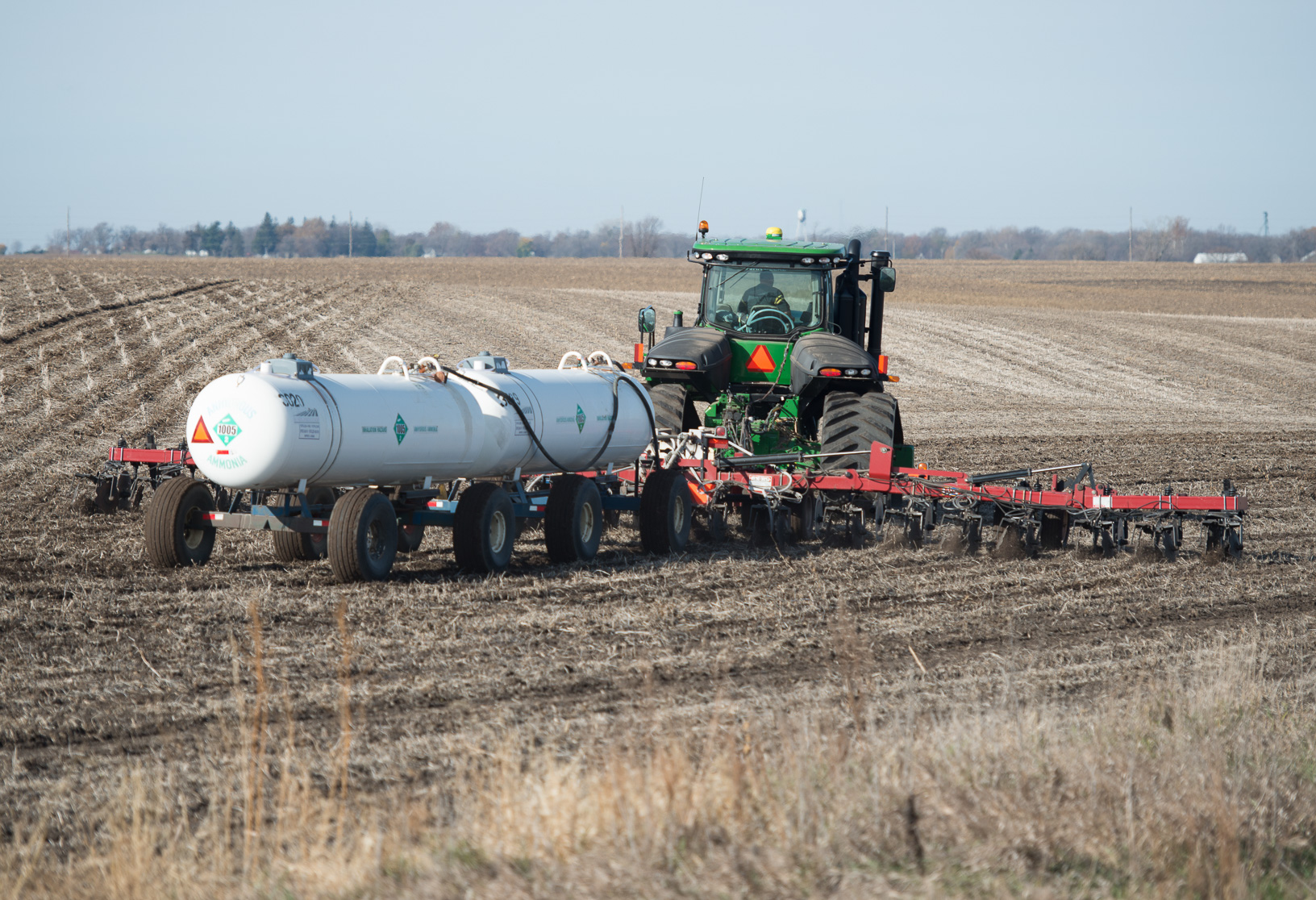
There was a dramatic rise in fertilizer prices this fall forcing some producers to change their fertilizer application plans. (Photo: Iowa Soybean Association)
‘The perfect storm’
December 2, 2021 | Kriss Nelson
Supply, demand and tariffs are all ingredients to what Chad Hart, Iowa State University Extension and Outreach economist is labeling the “perfect storm” when it comes to the rapid surge in fertilizer prices.
“We have a really strong demand for fertilizer. Five-dollar corn means a lot of people wanting to plant corn, so that means more fertilizer,” says Hart.
Supply chain issues are affecting people worldwide and fertilizer is not immune to that. In addition, Hart said some countries have chosen to hold onto their fertilizer stocks - for the time being.
“Not only do we have supply chain problems of moving the product along, but you have some countries that normally export a fair amount of fertilizer that are holding on to their stocks right now,” says Hart.
Tariffs placed on imported fertilizer could also be partially to blame for higher prices as well.
“The bottom line is costs are going through the roof and that will compress margins for farmers and maybe eliminate them if the corn and soybean prices fall back too much,” says Grant Kimberley, director of market development at the Iowa Soybean Association (ISA).
Hart is not optimistic fertilizer prices will drop by springtime but says there is still a profit to be made – at this time.
“Pair those fertilizer prices with the sales of high-priced corn,” he says. “If I am buying fertilizer, I am selling corn to lock in a profit margin and at least protect that part as I move forward,” says Hart.
Even if fertilizer prices drop over the winter months, the concern turns to product availability.
“Will we be able to work out the supply chain problems by then? The answer is probably no,” Hart says.
There have been discussions whether the issues with fertilizer will cause a shift in acres from corn to soybeans.
“I think there could be slight acreage changes in the core Midwestern states depending if their fertilizer was pre-bought earlier this year,” said Kimberley.
The states to watch for those larger acreage shifts could be corn and soybean producing states surrounding the Midwest depending on markets of the three big commodities – corn, soybeans and wheat between now and spring and if fertilizer was pre-purchased.
Robb Ewoldt, Iowa Soybean Association (ISA) president and farmer near Davenport said he is fortunate for an ag retailer and salesman alerting him in time to be proactive.
“I was able to pre-book all of my NPK for this fall,” he says. “My rotation will stay the same, nothing will change for me.”
Ewoldt fears some of his fellow producers may not have been so lucky.
“I hate to say it, but some might have to skimp by a little bit on their fertilizer. They won’t be putting on the maintenance and definitely not building fertilizer levels. That is a concern because you really can’t do that too many years before it comes back to bite you in a major way,” he says.
Back